|
Gene's Notes:
|
June was a good herping month. It was also filled with events.
On June 2, I participated in the
2007 South Carolina Herpetology Conference held at Riverbanks Zoo in Columbia. I presented a presentation on my experiences
in developing this website. Win attended with me. There was a lot of good information supplied by all presenters. The attendance
was good, but many more could have been accomodated.
Win made two presentations on reptiles and amphibians. The first was to the 4-H2O Camp
sponsored by the Clemson Cooperative Extension Service. On June 23rd, he prepared an exhibit and presentation
on herptiles at the Greenwood County Museum as part of the annual Festival of Flowers. Roark Ferguson of
Roark's Reptile Safari
also participated in the Museum's program. My granddaughter helped hold Roark's Burmese Python.
|
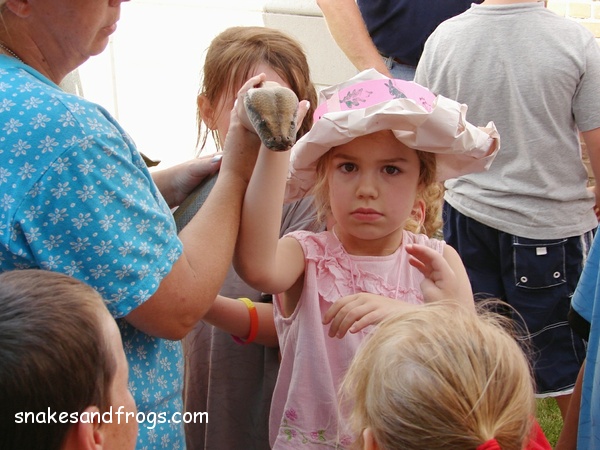
|
|
In last month's notes, I mentioned how well Win's chicken raising efforts were going. On June 16, disaster struck.
In the morning, Hope checked on the chickens and found 14 dead birds and 2 mortally wounded ones. The wounded birds and some of the
dead had obvious wounds and a hawk was seen eating one. Other birds did not show obvious wounds. There had been some strong lightening
just before dark the evening before. Our first theory was that a lightening strike had killed or wounded the chickens and
the hawk had taken advantage of a free meal. I disposed of the dead birds and Win harvested the two wounded birds. The lightening
theory seemed reasonable, but I could not find any evidence of a strike any place nearby. As I left for work the next morning, I
checked the remaining chickens and found three more dead birds and one wounded one. Each of these birds were clearly killed by the hawk.
The hawk turned out to be two juvenile Red-tailed Hawks. Win locked the chickens in the coop. The two juvenile delinquents sat on the fence
and cried for the next week. Occasionally, one of the parents would also show up. Win still thinks lightening played part in the
slaughter, but I think it was all hawk. I think the juveniles were desparately hungry due to their inadequate hunting skills. They attacked
the chickens and went into a frenzy, clumsily attacking any bird they could. Perhaps some of the chickens died from fright. The end result was
that Win lost 19 of his 25 chickens in less than 24 hours.
|
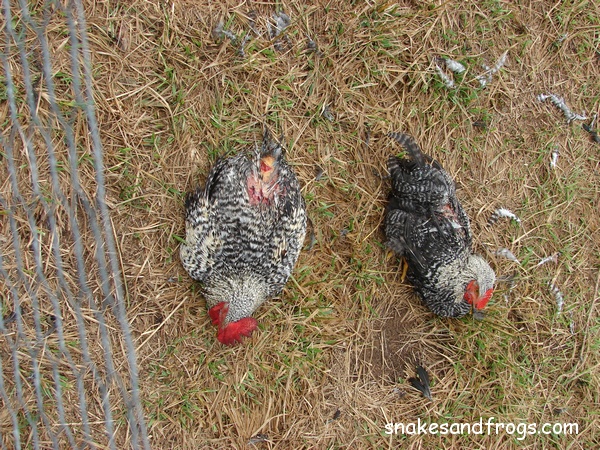
|
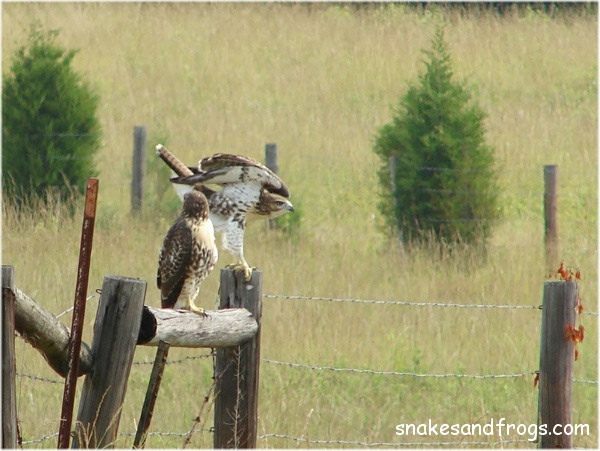
|
|
During June, I herped only on the farm, cruised local roads, and commuted to work. Black Rat Snakes were the most
commonly DOR snakes seen. Eastern King Snakes and Black Racers were also frequently seen DOR. I also saw one DOR Mole
King Snake and one DOR Rough Green Snake. AORs included a Copperhead, a juvenile Black Rat Snake, a Brown Snake, and a Redbelly
Watersnake. The Redbelly Water Snakes in the farm pond continued to be active. The young Eastern King Snake that we first
found in April under a piece of plywood was seen during June under the same piece of plywood.
On June 4th, I found a large Eastern King Snake crossing our driveway near the stream culvert. This snake had an indention
where several ribs had been broken and healed. On the morning of June 8th, I found a larger Eastern King Snake in the same location.
In the afternoon of he same day, I found a large Black Rat Snake at the same location. Win used
the second King Snake specimen in his 4-H2O presentation. He also captured one of the Redbelly Water Snakes at the pond and used in
the presentation.
During the month, I also saw many female turles seeking good locations to dig their nests, including Box Turles, a Mud Turtle, a River
Cooters, and a Musk Turtle. In a sand deposit beside the large creek, I found a turtle nest that had been raided and the eggs eaten.
|
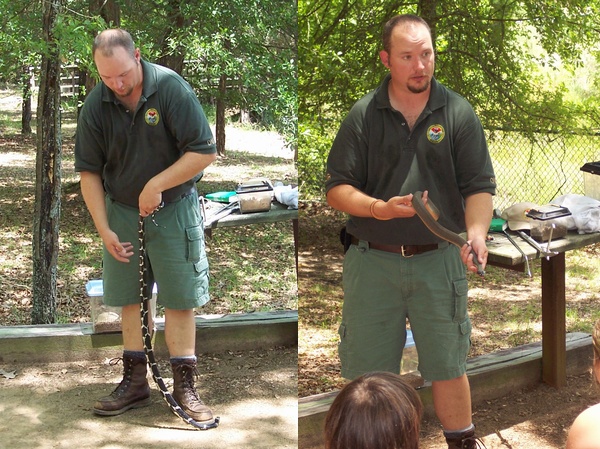
|
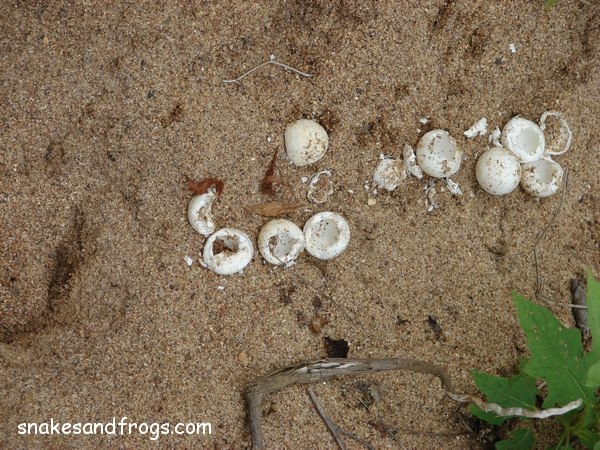
|
|
Skinks, Fence Lizards, and Racerunners have been enjoying hunting bugs in our flower and vegetable gardens. I snapped this image
of a female Fence Lizard enjoying a light rain shower.
Win and Hope spotted this White-tailed Deer fawn resting under on of their trucks.
|
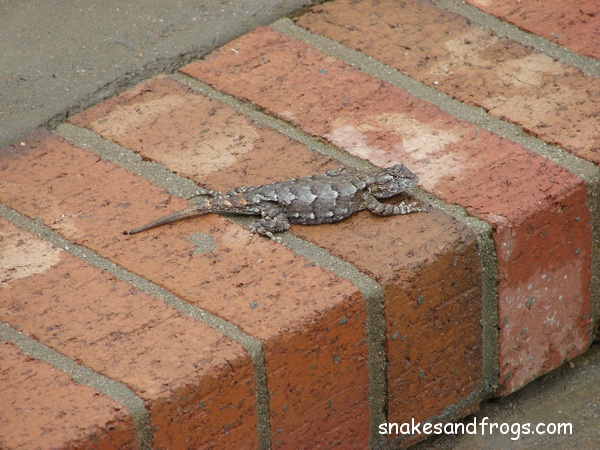
|
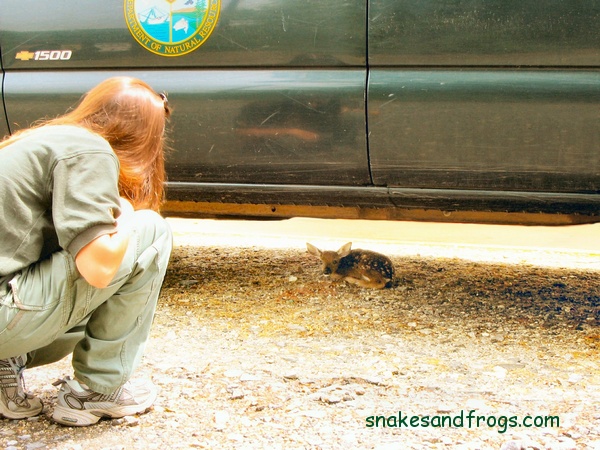
|
|
On the last day of the month, Win came upon the tail of a Black Racer protruding from a hole at the foot of a Pine tree. The snake
did not move. He had time go to his boat to retrieve his camera and then make some pictures. Finally, Win extracted the snake from
its hiding hole. It appeared to be gravid with eggs.
|
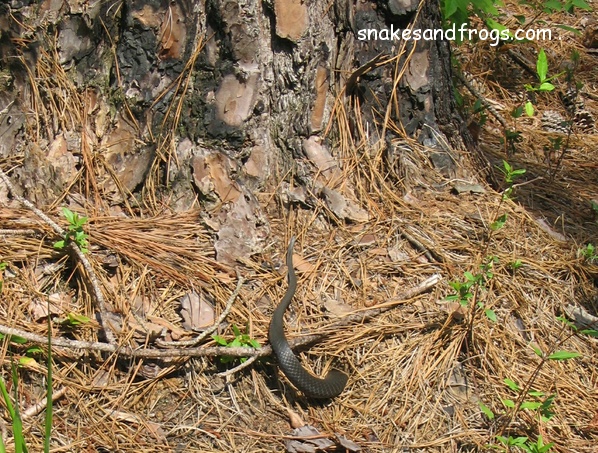
|
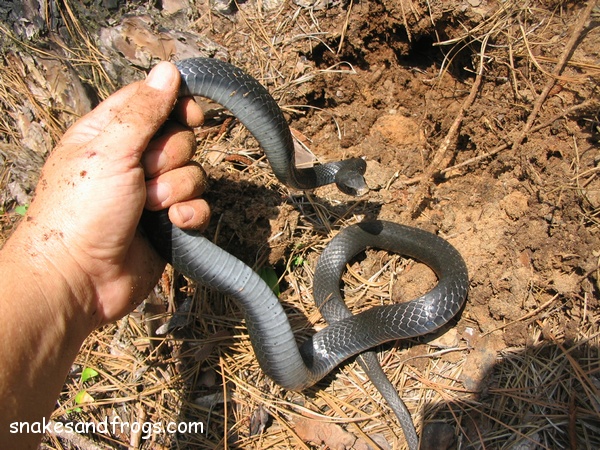
|
Gene Ott
====================================================
|